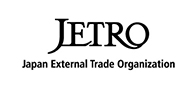Key Findings:
A complete report by Plunkett Research analyzing both America’s top employers and the major trends sweeping through business and the economy that affect job seekers of all types. THE ALMANAC OF AMERICAN EMPLOYERS is the premier guide to 500 of the largest, most successful corporate employers in the nation (those with 2,500+ employee count), their employment practices, benefits and financial performance.
Key Features:
-
Job market trends analysis, data and competitive intelligence
-
Statistical tables
-
Employment forecasts and statistics
-
Important Contacts for Job Seekers
-
In-Depth Profiles of 500 of the largest, fastest-growing corporate employers
Gather Key Insights, Such As:
-
How is each industry evolving?
-
How is employment being shaped by new technologies?
-
How is demand growing?
-
What are the financial results of the leading companies?
-
What are the names and titles of top executives?
-
What are the top companies and what are their revenues?
The Almanac of American Employers and the related online Major Employers Research Center are designed to be time-saving business tools for job seekers, marketers, sales directors, consultants, and strategists seeking to understand vibrant American corporate employers. It will also be of great use to placement, recruiting and human resources professionals, as well as professionals working in economic development, lending, and media. This feature rich almanac includes:
Contents, Statistics and Analysis Include:
Plunkett Research Provides Unique Analysis of the Following Major Trends Affecting Job Seekers
-
The U.S. Job Market Overview
-
Cost Control Remains a Major Concern at Employers/Consolidation Through Mergers Continues
-
The Sharing & Gig Economy’s Effect on Employment, Work Life and Careers
-
Technology Continues to Create Sweeping Changes in the Workplace
-
Continued Growth in Outsourcing, Including Supply Chain and Logistics Services
-
Offshoring and the Reshoring of American Manufacturing
-
Older Americans Will Delay Retirement and Work Longer/Many Employers Find Older Employees Desirable
-
Employment Sectors that Will Offer an Above-Average Number of Job Opportunities
Plunkett Research Provides In-Depth Tables for the Following Statistics
-
U.S. EmploymentStatistics Overview: 2024-2025
-
U.S. Civilian Labor Force: 1998 - July 2025
-
Employment by Major Industry Sector: 2013, 2023 & Projected 2033
-
Number of People Employed and Unemployed, U.S.: July 2024 vs. July 2025
-
U.S. Labor Force Ages 16 to 24 Years Old by School Enrollment, Educational Attainment, Sex, Race & Ethnicity: October 2024
-
Retirement Benefits in the U.S.: Access, Participation and Take-Up Rates, March 2024
-
Top 30 U.S. Fastest Growing Occupations By Percent Change: 2023-2033
-
Occupations with the Largest Expected Employment Increases, U.S.: 2023-2033
-
Occupations with the Fastest Expected Decline, U.S.: 2023-2033




















